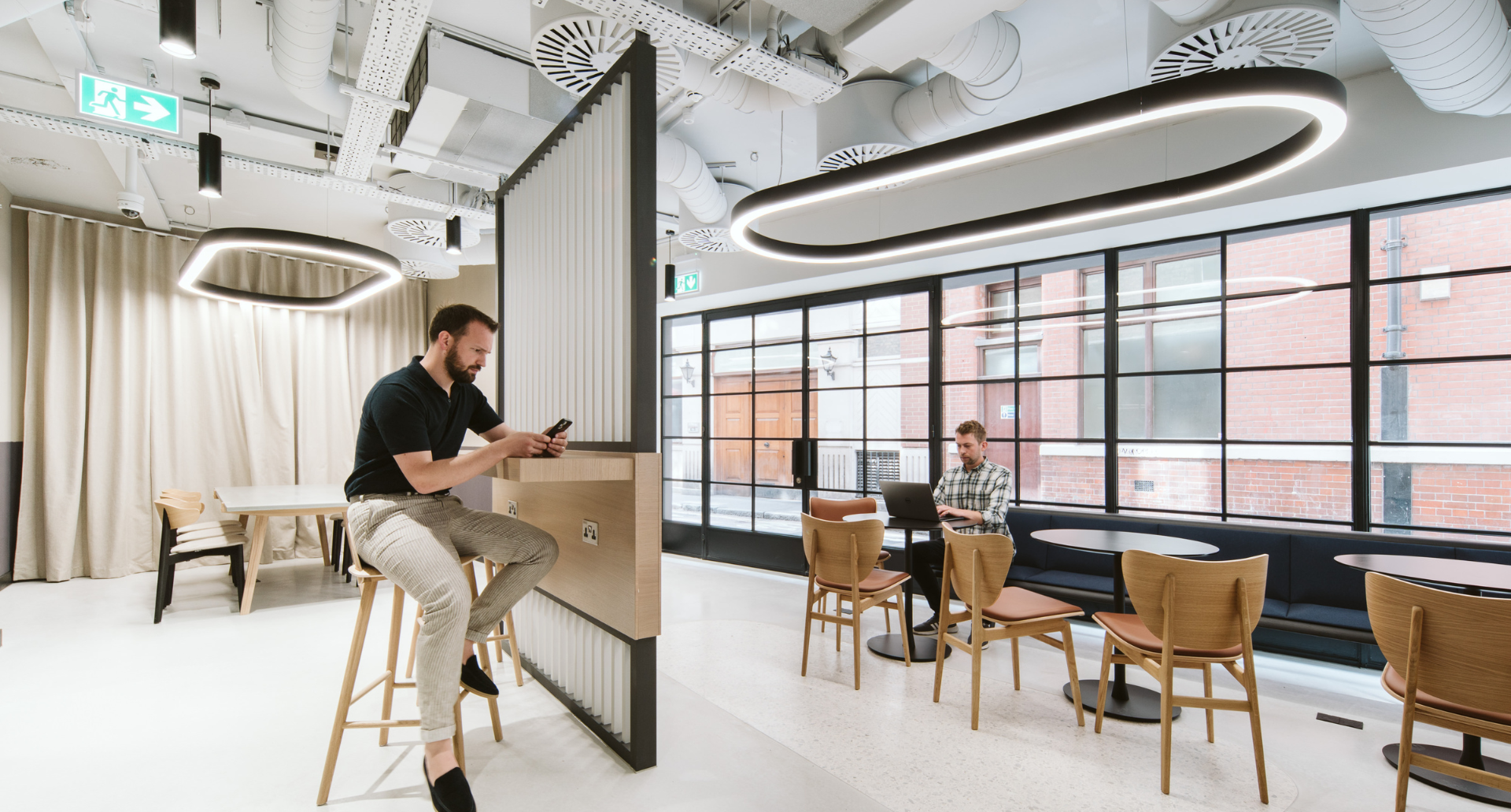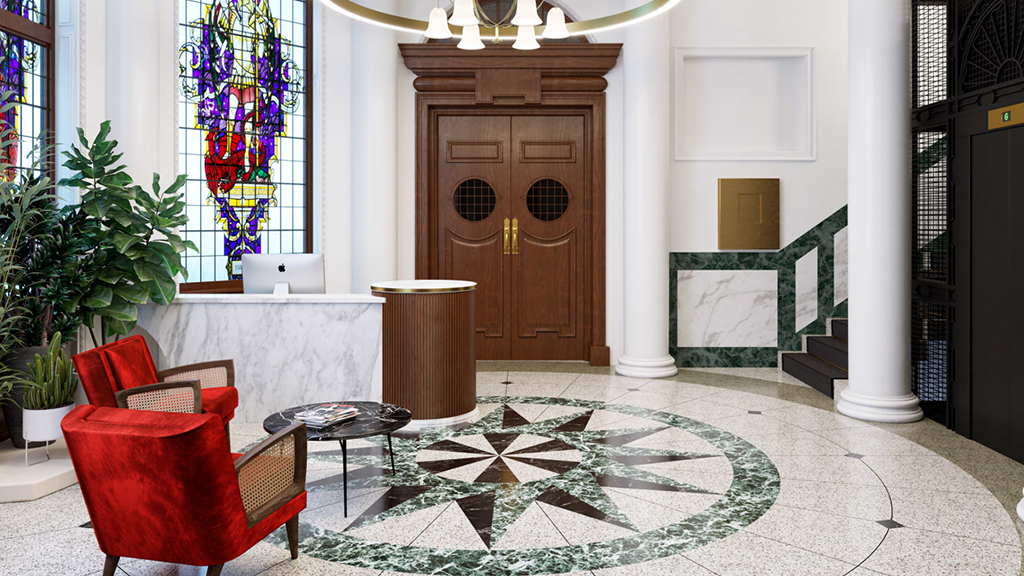
As our working habits become more flexible, the places we work in are changing too. The traditional office – leased privately by a single company and siloed away from any other businesses – might not be extinct, but it’s falling out of favour. Instead, we’re entering the era of the shared, flexible, collaborative workspace.
Here’s everything you need to know about the new generation of workplaces, what they offer, and how to choose one.
What is a collaborative workspace?
Collaborative workspaces are office environments designed to be used by multiple businesses at once. They contain a mix of private offices and open-plan coworking spaces, built around communal facilities and amenities. Diverse businesses can often be found in collaborative workspaces, forming a tight-knit community. That offers opportunities for networking and collaboration, hence the name.
The terms flexible workspace and shared workspace are also often used to describe collaborative workspaces. But it’s important to note that, despite the name, working in a collaborative workspace doesn’t necessarily mean you’ll have no privacy.
If you want your own space, you can choose to rent a serviced office inside of a collaborative workspace instead of opting for coworking. This offers most of the benefits of a traditional leased office, but minimises the downsides, including by offering offices on far more flexible terms.
The benefits of a collaborative workspace
Collaborative workspaces are growing in popularity for a reason – they offer plenty of unique benefits. Here are some of the most compelling, to consider when you’re deciding whether a collaborative workspace is right for your business.
A built-in community
One of the biggest benefits of collaborative workspaces is alluded to in the name – they’re collaborative! They bring together people from various backgrounds and sectors, providing a social environment that’s impossible to replicate in a traditional private office.
Choosing a collaborative workspace offers your employees the chance to connect with people from other businesses, fostering both all-important social stimulation and networking opportunities.
And you never know when an innocuous social meeting might uncover the chance for a joint project between your business and another. You might even find your next client or customer within a collaborative workspace.
Increased business agility
Unlike most traditional private offices, collaborative workspaces tend to offer flexible leasing options that allow you to scale your workspace size up or down depending on your changing needs.
This means you don’t have to worry about whether your workspace can accommodate the future of your business. If your team grows or shrinks rapidly, you can generally move into a more suitable office in a collaborative workspace with ease.
Flexible leases also mean you can retain agility over costs. Whereas a traditional office space might require a 5+ year lease commitment, the monthly rolling contracts that are typical in collaborative workspaces mean you can move out whenever makes most sense for your business.
Better location options
For many businesses, securing a traditional private leased office in a prime location is prohibitively expensive. Collaborative workspaces offer an attractive alternative, allowing you to get office space in the location that suits your business on a flexible basis, without the high costs involved with a full solo lease.
The benefits of being in a prime location are clear – you’ll have access to a better talent pool, transport links will generally be superior, and your employees can make use of outstanding local amenities.
Cost efficiency and transparency
Collaborative workspaces can be far more cost-efficient than other office options, allowing you to limit your costs by only paying for the space you need. This is in contrast to traditional leased offices, where you have to pay the full amount of rent every month for the full lease term, regardless of whether you need all of the space.
You can also cut the ancillary costs involved in having an office, with rich communal amenities and services generally coming as part and parcel of a collaborative workspace.
Cleaning, building maintenance, meeting room access, and more are all typically included with a serviced office in a collaborative space. You just pay one simple price for your office, giving you complete oversight of your costs.
More features and facilities
Whereas traditional private offices are typically minimal on additional features and facilities, collaborative workspaces tend to be filled with them. It’s not uncommon for these shared environments to offer communal access to high-tech meeting rooms, helpful reception services, and even on-site gyms.
These amenities generally come at no extra cost but can add plenty of value to your business. Perhaps most importantly of all, they make the office an attractive proposition, encouraging employees to spend more time there rather than working at home. If you’re trying to make a hybrid strategy work, a collaborative workspace can be a compelling addition.
Different workspace options
Activity-based working (ABW) is the concept of different environments being best suited to different types of work. Collaborative workspaces, which generally contain diverse settings including private offices, coworking spaces, and break-out areas, facilitate ABW, which can increase productivity.
This is particularly useful for businesses operating in creative sectors, where employees working at a fixed desk in a traditional office might not be able to do their best work. Having the ability to move into a livelier space when in need of inspiration and then retreat to a quiet zone for concentration is a game-changer.
Decreased workload
Finally, a collaborative workspace generally decreases the workload involved in managing an office space, saving you time and effort.
Offices in collaborative workspaces are typically fully serviced, which means cleaning and maintenance are handled for you by the building manager. That means you can spend less time staying on top of the state of your office, and more time doing the work that will help your business grow.
How to choose the right collaborative workspace for your business
Collaborative workspaces tend to contain at the very least two different working environments to choose from: coworking desks and serviced offices. If you’ve decided you want to base your business out of a collaborative workspace, the next step is to choose which one is right for you.
The key to making the right choice is to decide what your priorities are. If you’re keen to have a private space all to yourself, while still benefitting from a community feel, a serviced office might be for you.
If you want to choose the most flexible option possible, where you can scale costs and space usage on a day-by-day basis when needed, a coworking arrangement might be a better pick.
Whichever one you end up going for, find the perfect collaborative workspace for your business in The Boutique Collection. We have 30+ workspaces across London and the UK, featuring unbranded serviced offices, coworking lounges, and helpful amenities. Perfect for businesses looking to get more from their office space.
Related Posts

Dec 12 2022
Holborn Town Hall: Flexible offices and coworking in a historic Holborn building
Holborn is one of central London’s most exciting districts, and it’s never been a more compelling option for businesses seeking the perfect office location. It’s...
Read more
Feb 10 2023
How to choose the right office space
Location has always been an important factor in choosing an office space, but it’s arguably never been more so than now. If you’re looking for the...
Read more
Apr 06 2020
Stay home. Save lives.
With the COVID-19 pandemic sweeping the world, and the majority of the UK currently working from home whilst following the Government’s advice on non-essential travel, it’s...
Read more



